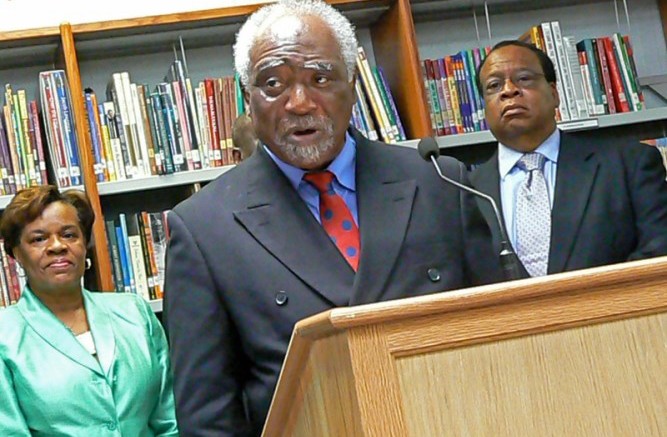by La Risa Lynch
Bullying has taking on a new dimension in the digital age and high school principal Debra Crump hopes changes to a federal law on school safety will give her teeth she needs to clamp down all bullying, including over the Internet.
“When you think of bullying, you only think about physical bullying,” said Crump, principal of Frederick Douglas Academy High School. “But when you look at what happens on the Internet, things that are being said and done to children, it is so important that we begin to bring legislation that catches up with the 21st Century technology.”
Educators, Crump added, must have the tools to address this epidemic since bullying has morphed from mere teasing and name calling with the advent of MySpace, Facebook and Twitter.
Crump may get those tools thanks to proposed changes to the federal Safe and Drug Free School and Communities Act. The changes will include language on bullying, harassment and intimidation. The law currently has no such provisions.
Congressman Danny Davis (D-7) is proposing the changes which will specifically define what bullying is. The changes also provides resources to school districts to develop programs and training to combat and appropriately respond to bullying. Davis introduced the changes last Tuesday when Congress returned to session.
The changes, Davis explained, are designed to educate students on what bullying is and the consequences of their actions, while giving teachers training on how to respond to it.
National headlines have been dominated by reports of teens suicide because of relentless bullying. Massachusetts prosecutors charged six teens in connection with the death of fellow student Phoebe Prince. Prince, 15, hanged herself after enduring months of relentless teasing.
“Some think that it is just a prank; that it is an innocent thing that they are doing, and they really don’t understand the full impact of their behaviors,” Davis said.
The changes includes cyber bullying and sexting or sending of nude pictures via cell phones. It also involves creating a false online identity to tease, harass or spread rumors about another person. The changes outlines complaint procedures and how school districts should respond to complaints.
A 2006 National Crime Prevention Council study found that four in 10 youth have been cyberbullied. According to Safeyouth.org, 30 percent of youth nationwide indicated that they were either the perpetrators, target of bullying or both.
Meryl Camin Sosa, Illinois Psychiatric Society’s executive director, does not need statistics to know bullying’s impact. Her two teen daughters have experienced it.
Her youngest daughter was bullied because of her weight. Another daughter was a victim of cyber bullying in which the school refused to get involved because it occurred off campus. Only after the police were called did the school intervene, Sosa said. She noted victims of bullying rarely tell a adult, and believe parents and teachers won’t intervene.
“Children who are bullied experience real suffering that can interfere with their social and emotional development as well as their school performance,” Sosa said.
State Rep. Kimberly Lightford applauded Davis for proposing the changes, which she said would create a national standard in addressing bullying. Lightford has been key in drafting state legislations on bullying prevention and sexting. An initiative that includes gender identity and sexual orientation as part of a school anti-bullying policy is awaiting the governor’s signature.
Lightford noted with over 900 school districts in the state, each one can interpret what bullying is which can muddle how schools respond to bullying complaints.
By defining bullying and putting it into law requires the schools to act. She noted most schools don’t implement anti-bullying programs because they see it as an “unfunded mandate.”
With bullying and harassment in the federal safe schools’ code it forces school districts to develop curriculum, policies and procedures to address it, she explained.
The Oak Park Police District received funding from Lightford to implement an anti-bullying program called STAND or Students Taking Action in a New Direction in several middle schools.
The program, which uses role playing, instructs all school personnel from teachers, cafeteria workers to bus drivers on what is bullying. Oak Park Police Commander Phyliss Howard said this empowers employees to stop it when it occurs. Since the program started in 2007, Howard said there has been a 60-70 percent drop in bullying.
“In the old days, parents would say, ‘Everybody has to go through that,’” Howard said. “But it is different now. People are not fighting fair.”
Douglas senior Brandon Brown said his school wasn’t immune form cyber bullying. He said there was a FaceBook posting that spread rumors about certain students.
Brown was not a target of it, but he added the comments were hurtful to where students “were ready to lash out.” He said when the principal got the police involved, the posting was off of FaceBook.
Brown ignored the posting, but he added the person who put up the site only wanted attention.
“The best thing to do for that is to ignore it,” the 18-year-old said.

Be the first to comment on "Davis proposes changes to federal law to include bullying"